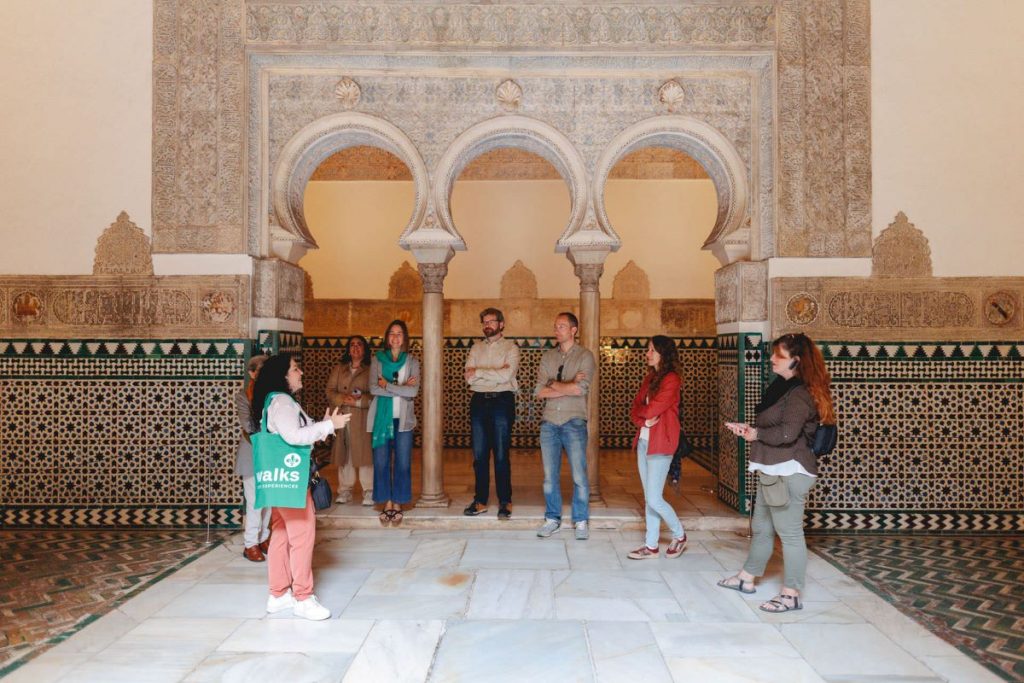Seville is a beautiful city, full of history and incredible architecture around every corner. And, luckily for tourists it’s very accessible and easy to explore on foot. Even if you have little ones, the lack of hills and abundance of pedestrian friendly streets make it the perfect place to wander. But where should you visit on your Seville walking tour?
We’ve come up with a simple route to take in some of the best sights this city has to offer.
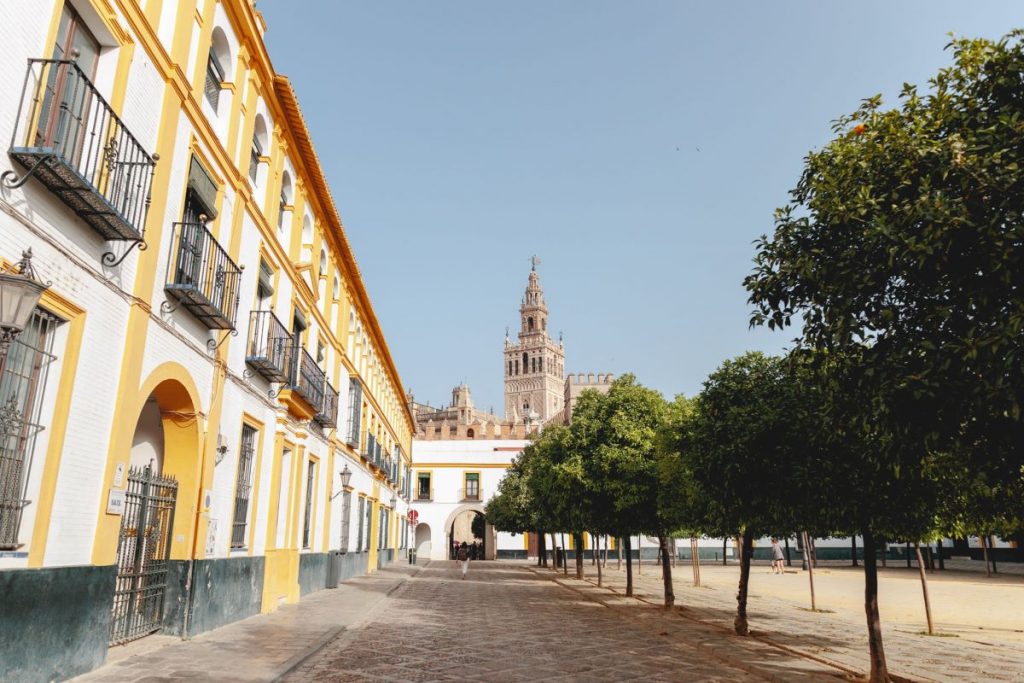
Starting point:
Plaza de España and Parque María Luisa
Let’s kick off our our Seville walking tour at the gorgeous Plaza de España. Get there early to make the most of the serenity. And, seize the photo opportunity of the magnificent surroundings before the crowds arrive.
Originally built in the 1920s to host the Ibero-American Exposition World Fair, it has a host of beautifully tiled alcoves, each representing a different Spanish province. Housed within Parque María Luisa, there are lots of hidden places to explore. It is a popular photoshoot location for brides and first communions. Don´t just take our word for it, come and visit for yourself to see why.
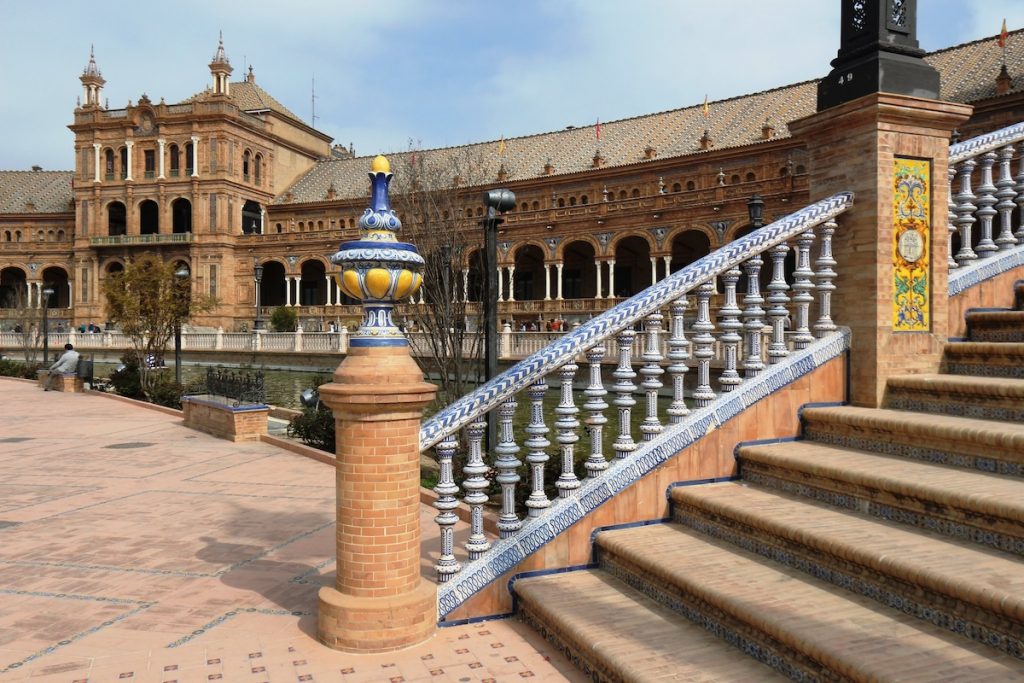
On the other hand, you may also recognise it from the silver screen. It features in Star Wars: Episode II Attack of the Clones as the exterior of the City of Theed. Other location credits include the old classic Lawrence of Arabia, and more recently, the Netflix dark comedy series Kaos.
To get to the next stop of your walking tour, head through the Prado de San Sebastián and cross over the road. Here, you can catch a glimpse of the Real Fabrica de Tabacos. Once a tobacco factory, made famous in the opera Carmen, it is now part of the University of Seville and it is also available to visit.
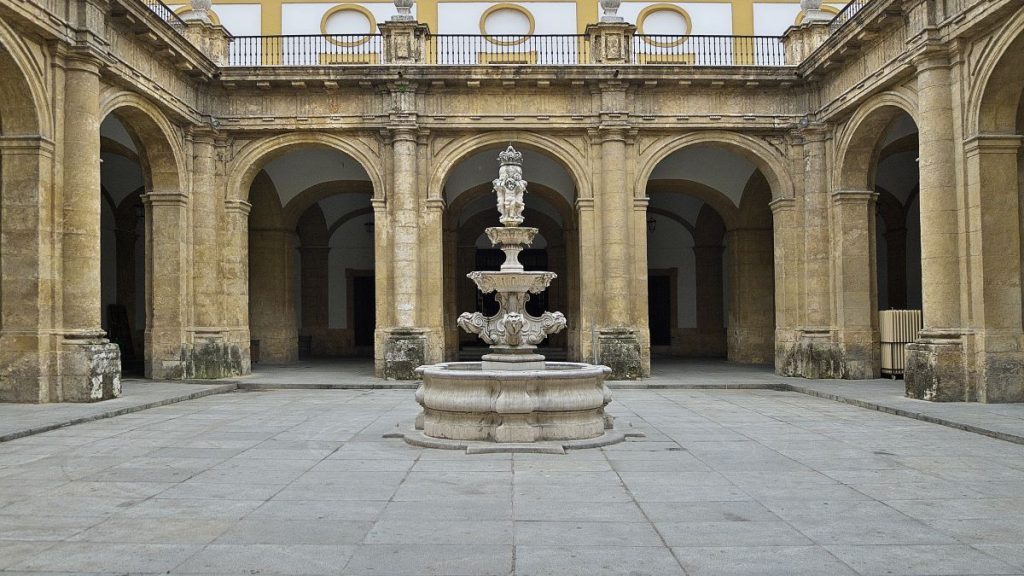
Stop one:
Jardines de Murillo
This 20th century gardens takes its name from the painter Bartolomé Esteban Murillo. The park runs next to the Real Alcazar and marks the beginning of the Santa Cruz neighborhood. It is listed as a bien de interés cultural or an asset of cultural interest. Dotted with benches, fountains and little corners to take a rest, it is the perfect place to enjoy some tranquillity in the city.
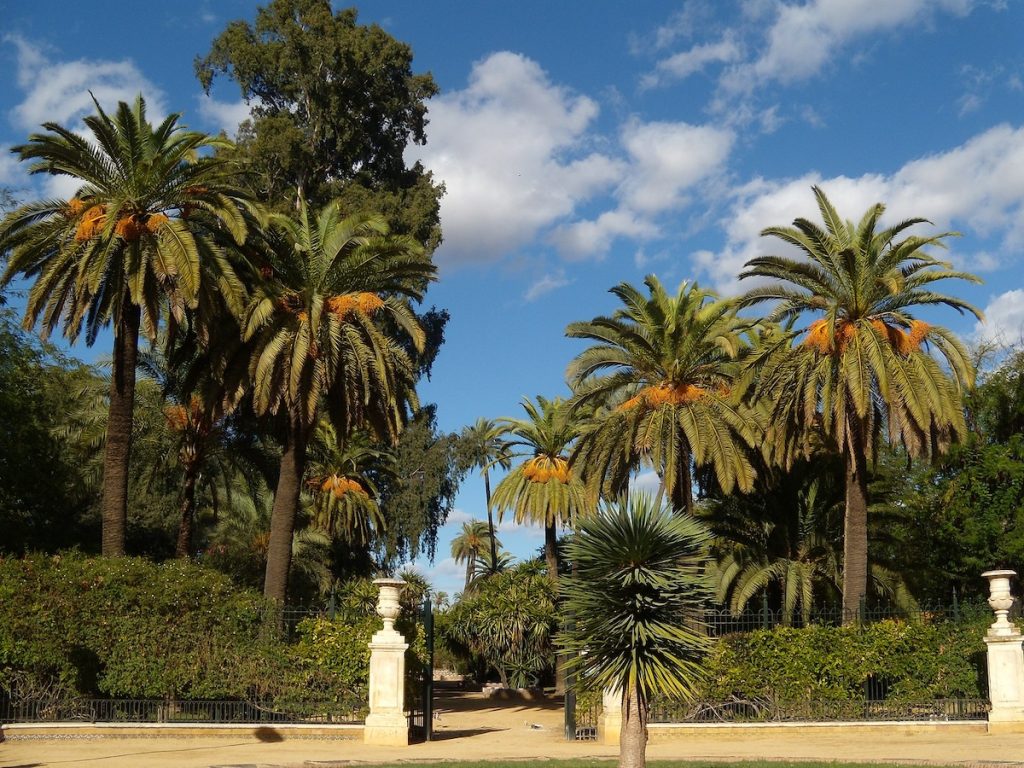
The Real Alcázar of Seville
Before you leave the Jardines de Murillo area, you must take a visit to one of Seville’s most breathtaking landmarks — the Real Alcázar. This UNESCO World Heritage Site is one of Europe’s oldest royal palaces still in use. Its intricate mix of Mudejar, Gothic, Renaissance, and Baroque styles perfectly reflects the city’s layered history.
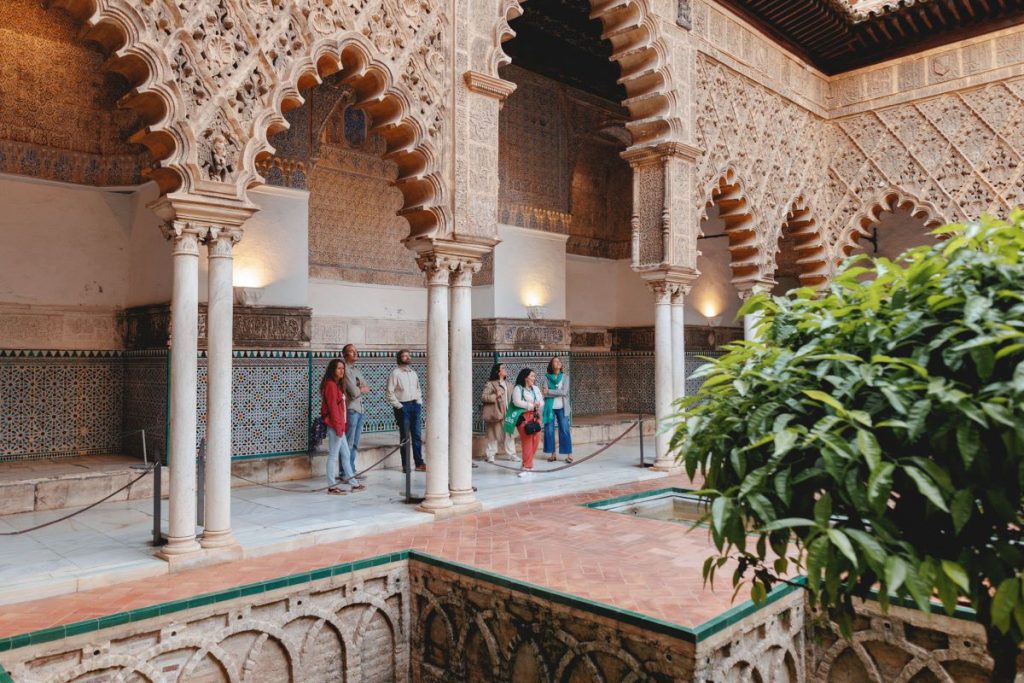
Wander through ornate courtyards, marvel at the tilework, and don’t miss the lush palace gardens. This tranquil oasis feels worlds away from the city streets just outside. In fact, talking of other worlds, fans of Game of Thrones might recognise the Alcázar as the setting for the Water Gardens of Dorne. However, in our opinion, in real life, it’s even more magical.
Insider tip: If you’d like to experience the Alcázar at its most peaceful, consider joining our Exclusive Early Access Seville Alcázar Tour. You’ll step inside this royal palace in the quiet morning light and hear fascinating stories and hidden details behind one of Spain’s most extraordinary landmarks. Our local expert guide will ensure this is a truly unforgettable way to start your day in Seville.
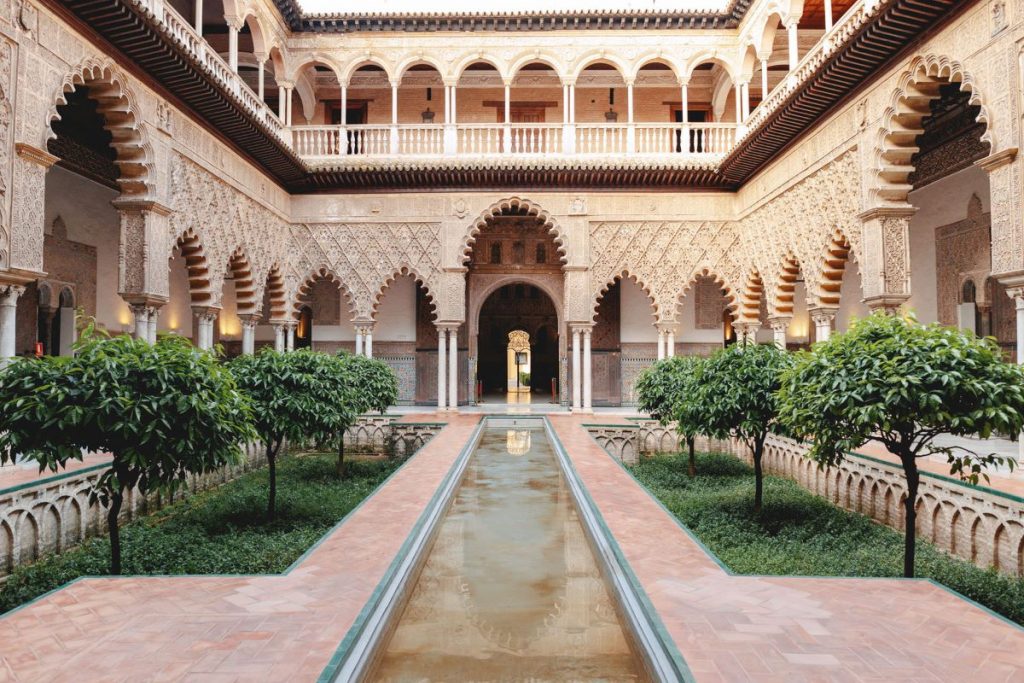
Stop two:
Calle Santa Teresa
Head out of the Alcazar, via Nicolas Antonio and make your way into the center of the city – Santa Cruz”, via Calle Santa Teresa. The narrow pedestrian streets are a hallmark of the old town, which was formerly the Jewish quarter. It is easy to get wonderfully lost in the labyrinth of walkways.
Grab a coffee and sit outside, to people watch and witness the streets fill up as the day begins.
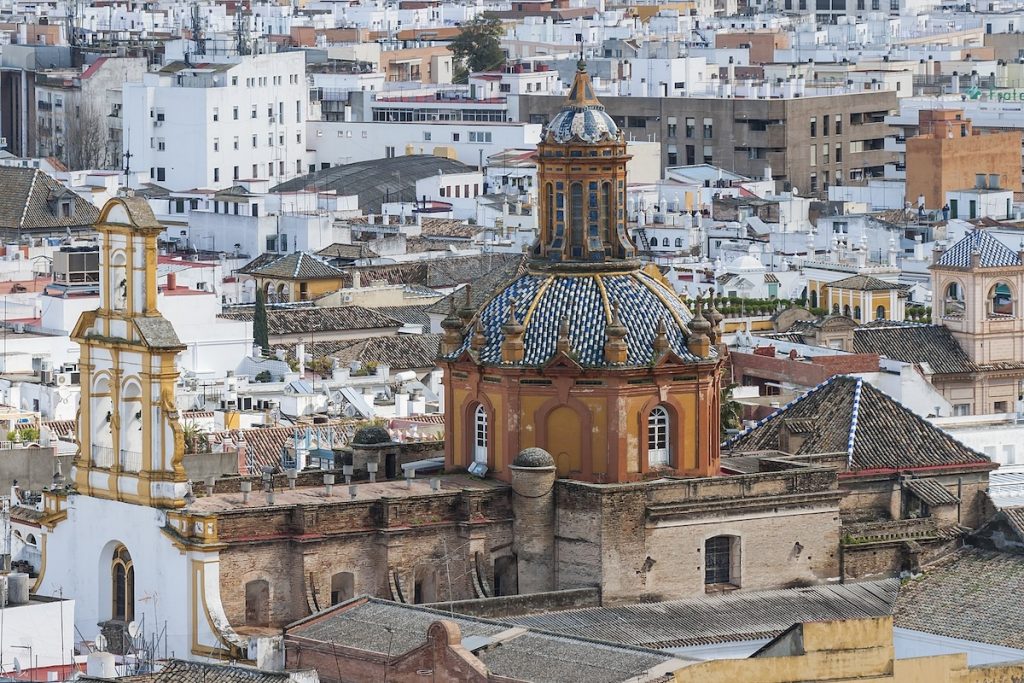
Stop three:
Roman columns
Next stop from the center is to head down Meson del Moro, and when you reach the street of Mateos Gago, you have 2 choices.
You can take the longer option, and walk down the street to view the Cathedral, and maybe stop for a coffee or a bite to eat. There are many bars and restaurants on this pedestrianised street for a pit stop before you turn around and walk back up the hill.
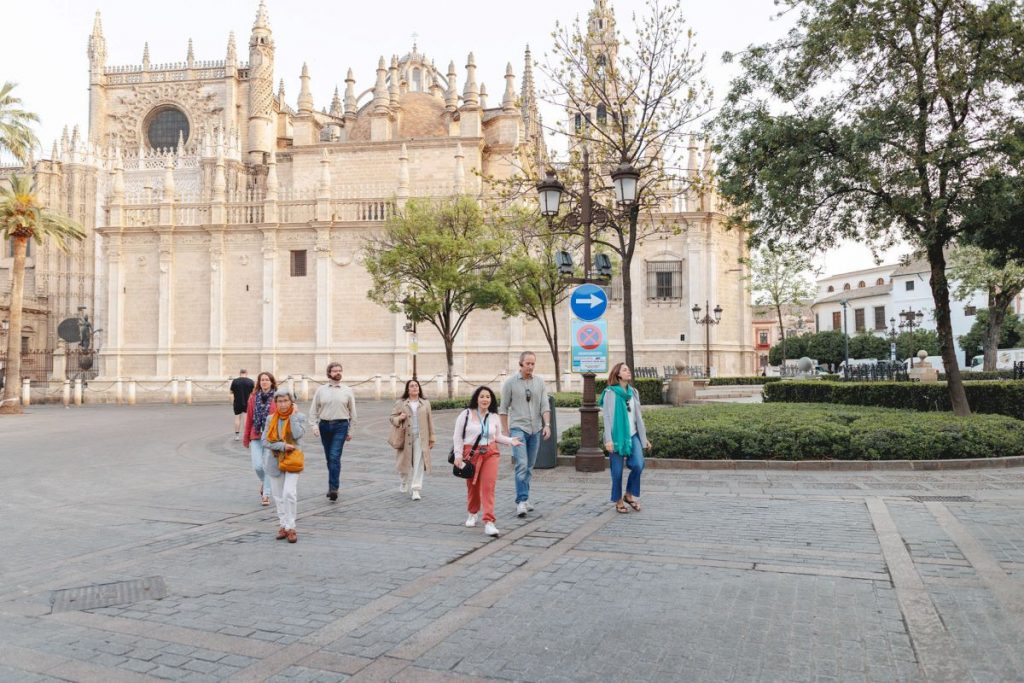
Or you can just take a right up the street of Mateos Gago, and pause at the top to see the cathedral peaking over the buildings. After enjoying the view, you take a left onto Fabiola, before slighting left onto Aire. Follow this delightful Callejon (alley) until you reach the Roman Columns on your right.
Local’s Tip: Try to sample some local cookies from the nearby Convento Madre de Dios, and see why many locals continue to buy from them to this day.
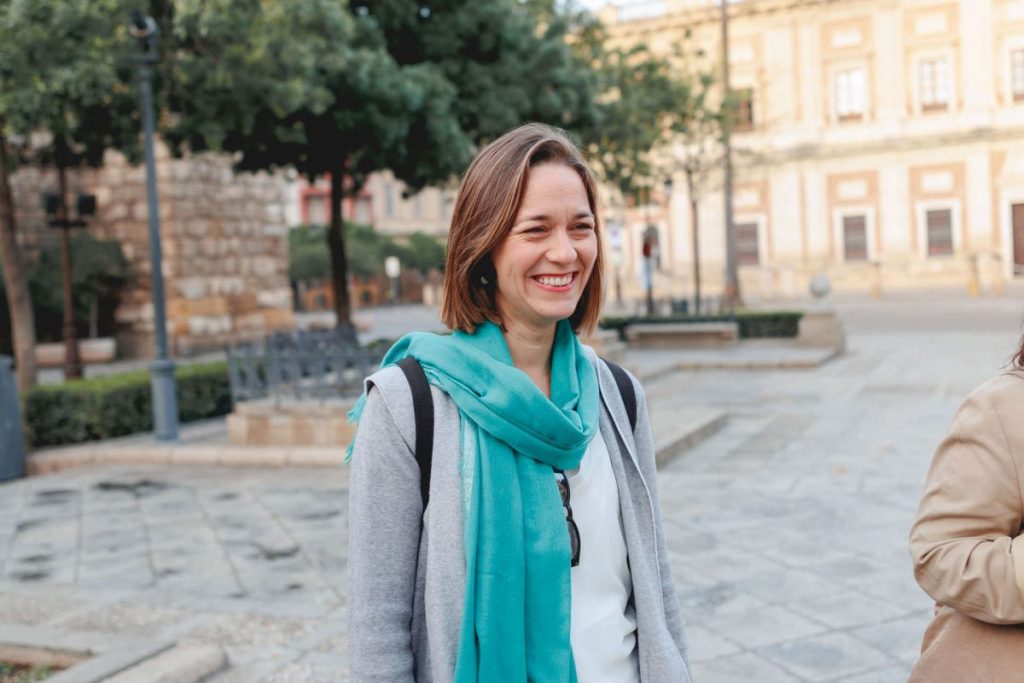
Stop four:
Plaza Alfalfa
From the Roman Columns, you head up Marmoles, and take a right down Muñoz y Pabón. The street veers to the right before becoming Cabeza del Rey Don Pedro. Take an immediate left on to Candilejo, following the street until you hit a small plaza.
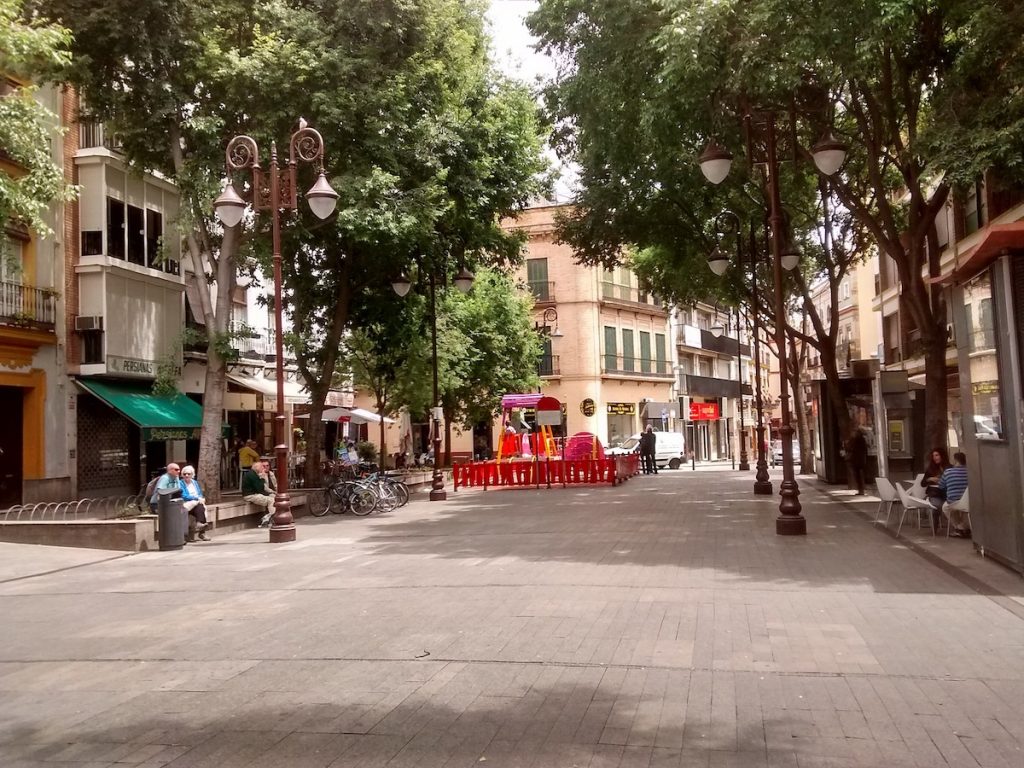
This is a well-shaded plaza in the centre of the old town with plenty of bars to choose from. The abundance of shade makes it a perfect spot to recharge and cool down in the warm spring and summer months. For those with kids, the playground here might be your best friend. Food highlights in this area include Catalina La Barra, Bodega de la Alfalfa, Sal Gorda, and Casa Monolo.
Stop five:
Plaza del Salvador
Leave Alfalfa via Alcaiceria de la Loza, turning left on Jesus de la Pasión. Next take a right on to Villegas, until you hit the plaza on your right. Home to not only the impressive Salvador church, (which was in fact one of Muslim Spain’s oldest and most important mosques after Cordoba and the interior still contains some of the elements from that original mosque) but also several local bars to grab another drink from and people watch.
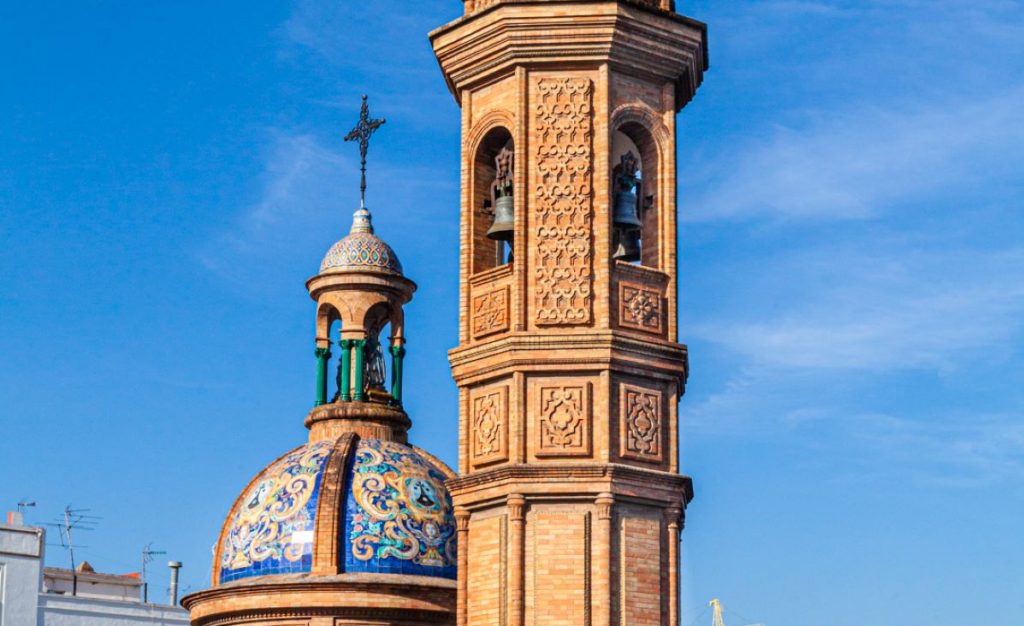
Stop six:
Metropol Parasol
Exit the plaza by heading down Calle Cuna, and do a bit of window shopping in this street known for its tailoring, bridal and suiting shops, and flamenco dresses.
The Metropol Parasol, known locally as Las Setas (“The Mushrooms”), is one of Seville’s most striking modern landmarks. Designed by German architect Jürgen Mayer, this vast wooden structure rises over La Encarnación square, providing shade, style, and spectacular views of the city. Completed in 2011, it’s considered one of the largest wooden constructions in the world.
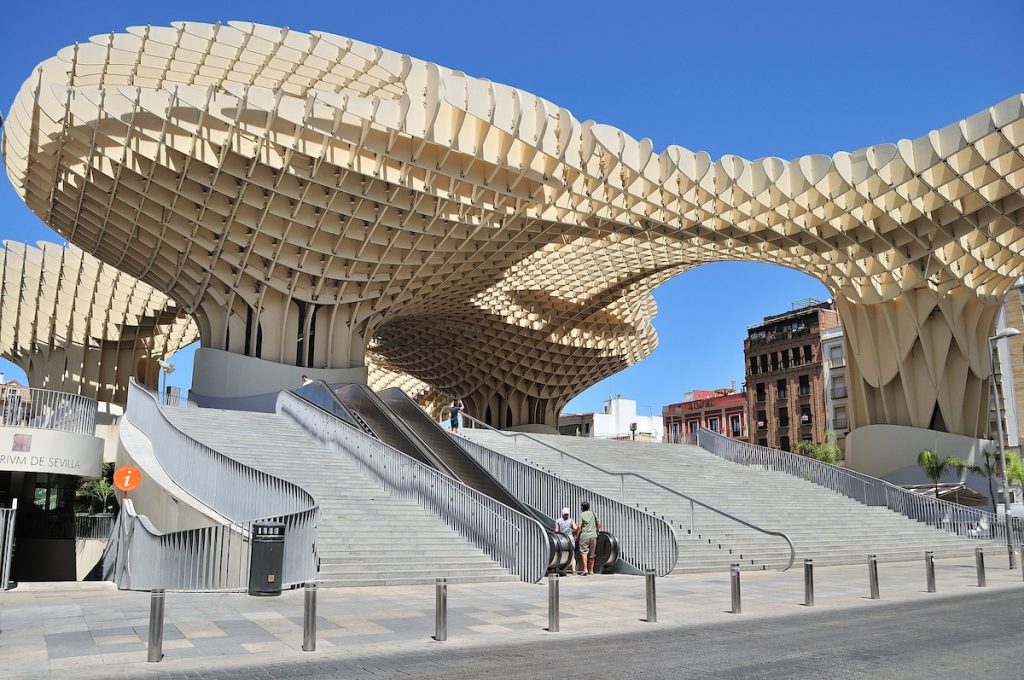
Visitors can explore the lively market at its base, admire Roman and Moorish ruins in the Antiquarium below, and walk along the undulating rooftop pathways for breathtaking panoramic views.
Palacio de la Condesa de Lebrija
Towards the end of this street you’ll also find the Palacio de la Condesa de Lebrija. This 16th Century palace is decorated with Roman mosaics and is a must see for any history buff with an interest in the classics.
Stop seven:
Iglesia Santa Catalina
Continue past The Setas along Imagen. Keep on the left hand side as the road snakes its way through the historic centre.
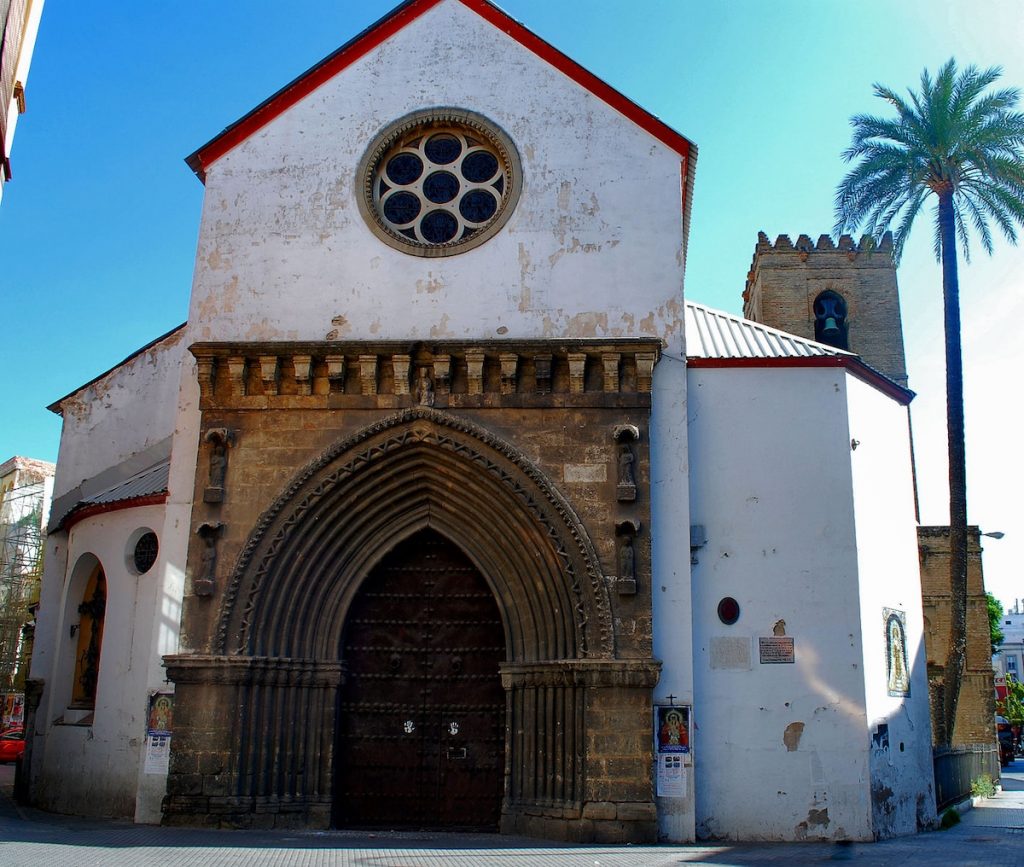
Located on the former site of a Roman temple, Visigoth church, and then a mosque, the Iglesia Santa Catalina is one of Seville’s archdiocese’s jewels. Though home to hundreds of beautiful churches, trust us when we say you won’t regret going into Santa Catalina for some quiet reflection during your stay here.
Take the opportunity to sit and relax in this area, home to some of the best cask wines and cold tapas in the city, with a history going back over a century.
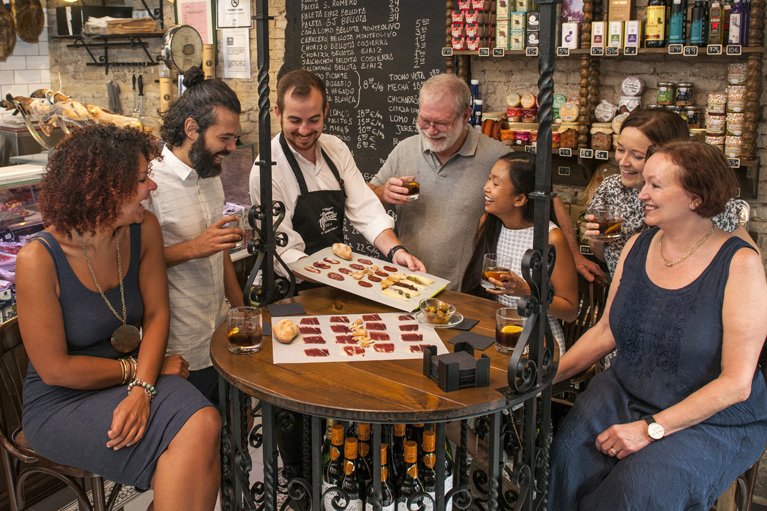
Stop eight:
Plaza San Marcos
Now hopefully refuelled, take a left out of Clavales and head towards Bustos Tavera. This winding one way street takes you off the beaten track, and into an authentic neighbourhood within Seville’s old town. As the street opens up, the impressive tower of San Marcos greets the plaza which bears its name. Another example of gothic and mudejar architecture, San Marcos’ interior is known for its simplicity when compared to some of its contemporaries in the city.
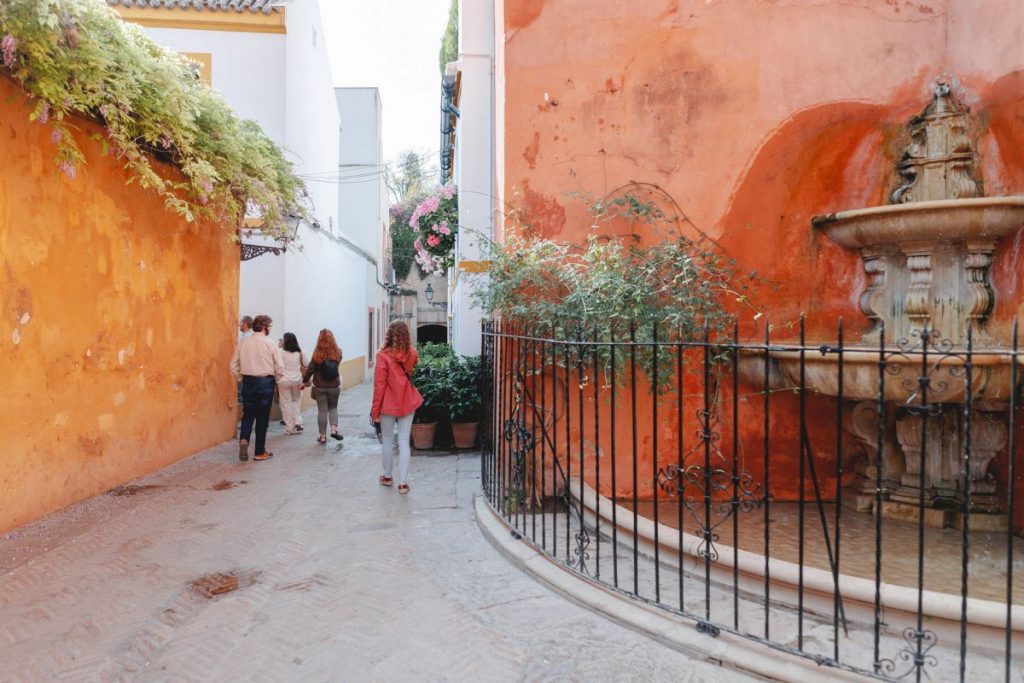
Those keen on history will be interested to know that you are now walking on one of the most historically significant streets, with this area being a main point of entry to the town during both Roman and Islamic rule.
Final stop:
Macarena
We reach the end of our Seville walking tour by continuing up San Luís until you hit the ancient doorway and old town wall. Also known as the Arco de la Macarena, it sits in the shadow of the Basilica itself. Home to one of the city’s most worshipped Virgins, known locally as La Macarena, there is simply no better way than to end your walking tour by visiting La Guapa (the beautiful one), and also learning more about one of Seville’s most revered festivals, Semana Santa.
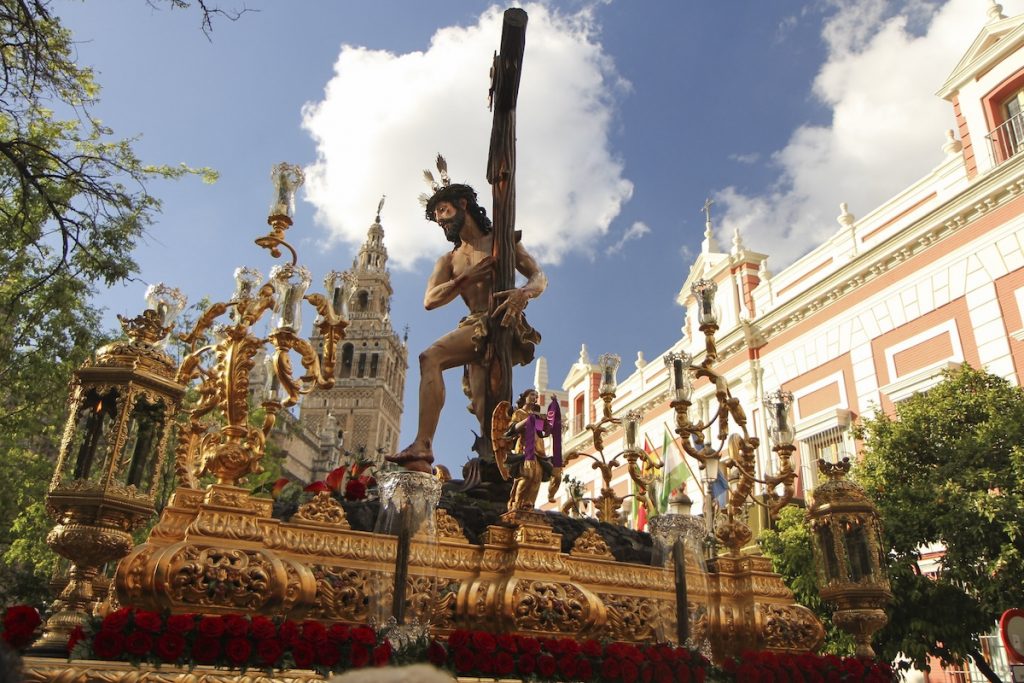
That concludes our Seville walking tour… from here you have a few options…
- You can take the C1 bus from the stop just in front of the archway back to Prado de San Sebastian, bringing you back to where the tour began.
- Alternatively, continue your exploration by heading to Calle Feria and Feria market via Bécquer.
- Or a top local tip is to go back to the Metropol Parasol walkway about an hour before the sun sets to watch the buildings on the skyline glow.
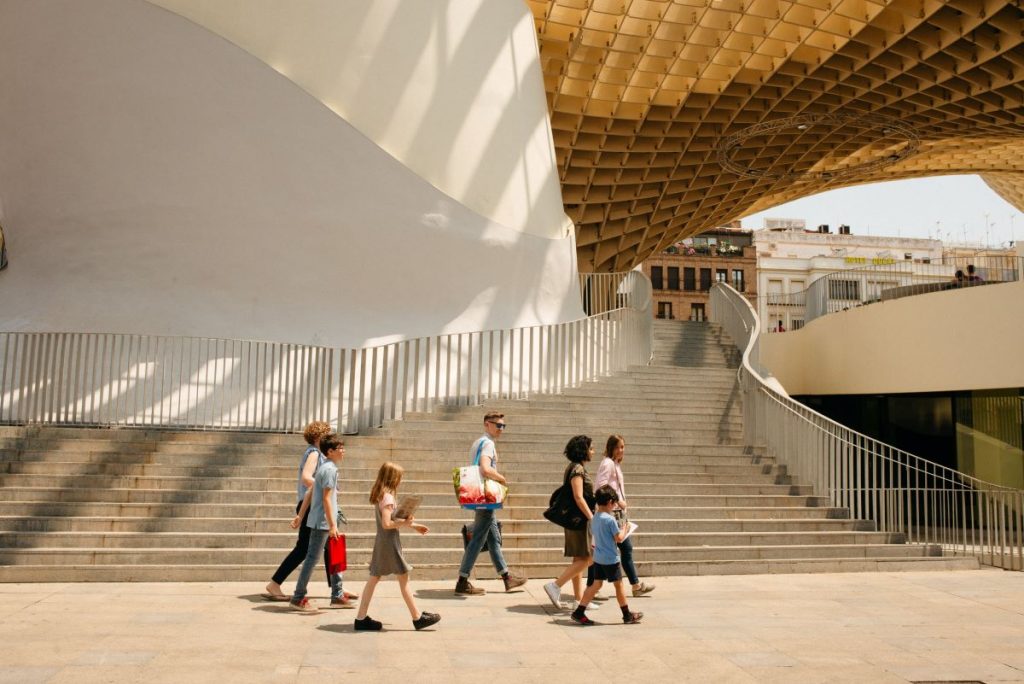
FAQ´s – Self-guided walking tour of Seville
FAQs about Exploring Seville on Foot
How long does this Seville walking tour take?
The full route is just over 4.5 km (about 3 miles) and can comfortably be done in half a day, depending on how long you stop at each site. Plan for a full day if you want to take your time, enjoy a coffee, and soak in the atmosphere.
Is Seville easy to walk around?
Yes! Seville is one of the most pedestrian-friendly cities in Spain. The terrain is flat, the streets are well maintained, and much of the old town is car-free. It’s ideal for travelers of all ages — even families with young children or strollers.
Can I book a local tour guide for a tour like this?
This self-guided walking tour will definitely take you to Sevilla’s top landmarks and historic sites, but if you really want to dive deep into the city’s history, check out one of our small-group Sevilla tours. Led by local experts, there are several options, from spending the morning Alone in the Alcazar on an Early Access Tour to enjoying the tastes and traditions of Sevillano food, to a a marvelous evening of Tapas & Flamenco.
